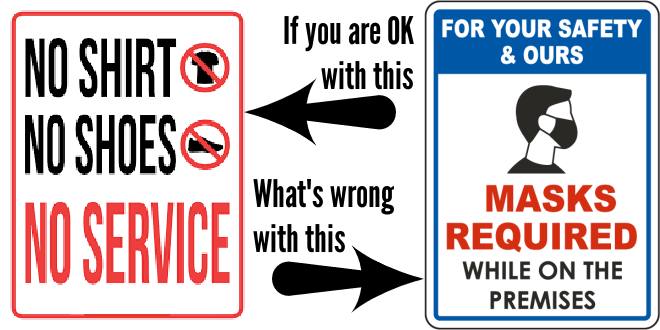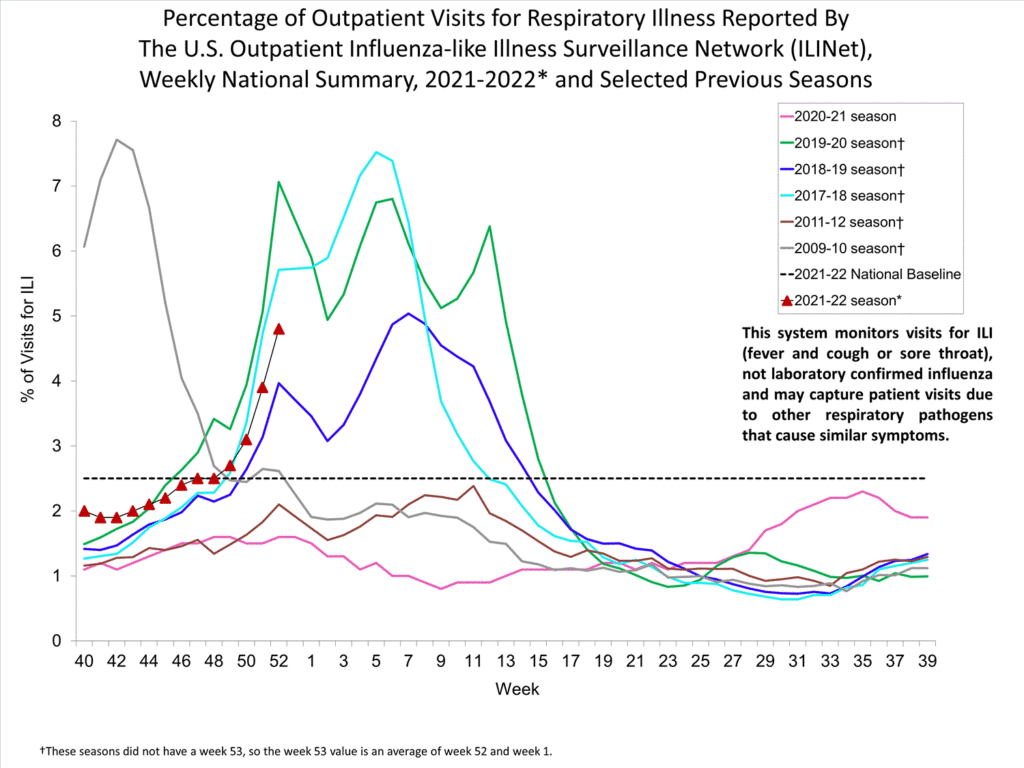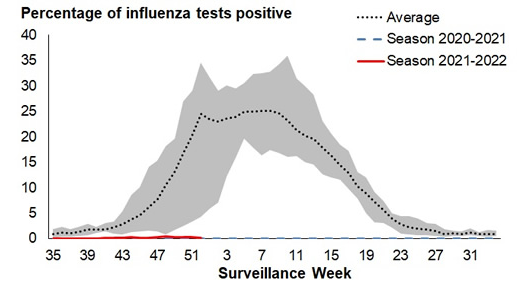After almost two years of wearing masks in public, are we ready to ditch the mask? There are some compelling reasons not to.
The COVID-19 Coronavirus pandemic struck North America like a freight train in March 2020. We saw it coming, yet we were embarrassingly unprepared. In May 2020, despite the obvious benefits of wearing a mask during a respiratory pandemic, I was frustrated that the authorities were still poo-pooing masks.
Close everything down and send the economy plummeting? Sure, why not?
Wear masks that are only a minor inconvenience? Not a chance.
Fast-forward to 2022. We kick off the year after wearing masks for a year-and-a-half, since the authorities finally recommended and even mandated mask-wearing. It turns out that masks – surprise, surprise – protect people from infecting each other with coronavirus. Whodathunk?
Masks are super protectors
It turns out that masks also protect people from other things, too.
Every year seasonal influenza (the flu) rages through the United States. According to the CDC:
CDC estimates that flu has resulted in 9 million – 41 million illnesses, 140,000 – 710,000 hospitalizations and 12,000 – 52,000 deaths annually between 2010 and 2020.
According to the Public Health Agency of Canada (PHAC):
Each year in Canada, it is estimated that influenza causes approximately:
- 12,200 hospitalizations
- 3,500 deaths
In both countries, those deaths and hospitalizations happen overwhelmingly from early October until late April.
Except for the 2020-2021 flu season…because there was no 2020-2021 flu season. Check the graphs below.
The CDC graph shows how the 2020-2021 flu season (pink line) never took off. You can see how it compares to the previous three seasons (green, dark blue and light blue). While we were all wearing masks, the flu flew away.
But look what’s happening this season. As fewer Americans are wearing masks, and the Omicron variant of COVID-19 is filling hospitals, it looks like we are having a flu season once again. Or not. You see, the US flu monitoring doesn’t actually test for flu – it just tracks flu-like symptoms. And the Omicron variant resembles the flu more than previous variants. SO that flu season that we might be having this year is likely just Omicron.
The PHAC graph compares the 2020-2021 flu season (dashed blue line across the bottom) with the average from 2014 to early pre-pandemic 2020. These are actual tests for flu, and once again, there really was no flu season.
This year (red line, also across the bottom), as Canadians continue to wear masks indoors, no flu season again. Because these are actual tests, the avalanche of Omicron cases can’t swamp the flu-tracking results in Canada.
Awwww…but it’s just the flu.
Actually, it’s about 40,000 deaths per year across North America. Yes, if we all wore masks in public, indoor spaces from October through April, we could save 40,000 people from dying. Is wearing a mask too much of a burden to save 40,000 people from dying?
There are also 450,000 hospitalizations each year from flu across North America. That’s half a million people suffering a lot more than “just a flu” each year. And we could relieve that suffering just by wearing a mask in public places.
But there is more. A 2017 study pegged the average hospital stay for seasonal influenza at C$14,612 (about US$11,500). That is a US$14 million drain on the Canadian economy.
But that’s nothing compared to the toll it takes on the US economy. An NCBI study found that the “average annual total economic burden of influenza to the healthcare system and society” in the United States is a whopping $11.2 billion. That’s over $11 billion each year caused by flu hospitalizations.
Let’s review. If we wear masks in public places, we save 40,000 lives, save 450,000 people from suffering so badly that they need to go to the hospital and save the economy over $11 billion.
Take our masks off and 40,000 people die, 450,000 people suffer and we throw away $11 billion. Any questions?
Your masking questions answered!
Would we have to wear masks everywhere?
Good question. The honest answer is that I don’t know. But, seeing as my credentials on masks and disease prevention appears more accurate than that of the “experts”, here is my tentative advice. We should wear masks wherever lots of people are in close proximity in small places with poor ventilation. For example:
- in public transportation, such as buses, airplanes, trains and maybe taxis
- in elevators
- in stores and malls
- in theatres and indoor stadiums, when more than a quarter of the seats are occupied
- probably some other places, too
Should there be mask mandates? What about my rights?
There is a saying: My right to throw a punch ends where your face begins. Do we have a right to infect people when we know that some people will die and others will get painfully sick? Especially when the solution is sooooo easy to implement?
As a general rule, we try to avoid high-cost, low-benefit mandates. But saving 40,000 lives, 450,000 hospitalizations and over $11 billion is a huge gain. And it can be achieved at so little cost and so little inconvenience.
I don’t wanna wear a mask. I want to protest instead.
[Sarcasm alert!]
I understand the huge burden society would place on your shoulders. Being forced to cover up a part of your body in the name of “public decency” is bad enough. But now you would be asked to cover up a part of your body to save 40,000 lives, 450,000 hospitalizations and over $11 billion. I can see how that might be taking things too far.
[End sarcasm]
I don’t see anybody demanding their right to walk around topless.
I don’t see anybody demanding their right to walk around bottomless.
I don’t see any sincerity in demanding the right to walk around maskless.

Let’s start talking about a seasonal mask mandate
The benefits of wearing a mask are not limited just to the effects of the flu. Even the common cold costs people in misery, in unproductive days off work and in over-the-counter medications. I don’t know about you, but since this pandemic began, we’ve had no colds in our household.
Plus, COVID-19 will probably remain with us in one form or another. Less deadly. Less dangerous. But still killing people and still sending them to hospital, just like the flu. When the pandemic is over and the COVID-19 becomes endemic, it will still be worth wearing a mask to protect against thousands of COVID-related deaths and hospitalizations each year.
There might be other diseases that have been lessened since we’ve been wearing masks, too. We might be saving lives without even realizing it.
The benefits of mask-wearing are high. The costs are low. With any luck, we can put this pandemic behind us. When we do, we could retain good habits we’ve learnt … or we could return to 40,000 senseless deaths and 450,000 needless hospitalizations, at a cost of over $11 billion.





In the 2 years of the pandemic, the use of masks, gloves, sanitizers, and social distancing has become a way of life. Wearing masks is still an effective and added layer of protection. Cleanliness and proper hygiene is still very important inside and outside of the house.
Fortunately, the science now shows that N95 masks and other high-quality respirator masks protect the person wearing them. So people who choose to wear masks can wear those with the knowledge that they are protected and no longer need to ask those around them to wear masks as well.
Hey! 🌟 Great read! 😊 Considering how masks became a style statement during the pandemic, maybe we’ll see some cool, fashionable ones post-COVID! What’s your take on mask fashion? 😷👗 #NewPerspective
only when we are sick or travel by bike, motors so many like in asian countries, we wear mask, then, why we wear in cars, trucks, taxies…. !?